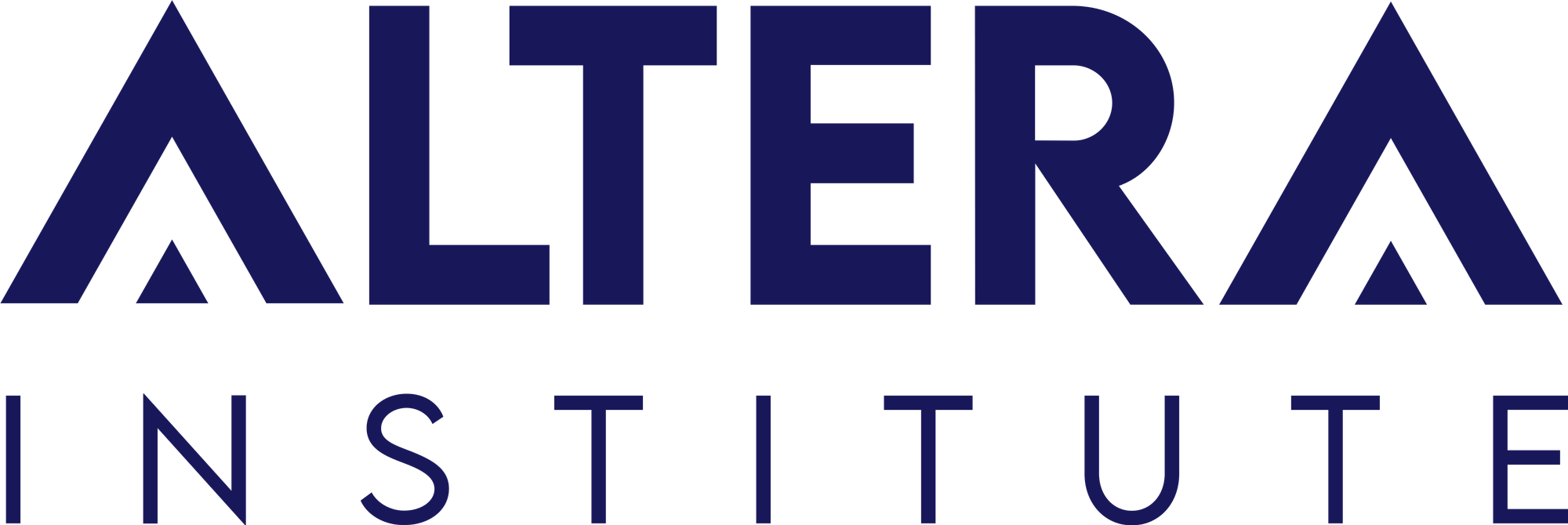What Is Roi In MBA?

An MBA is a life-changing investment for many students and professionals. Most MBA colleges incur a high fee from students while promising enhanced skills, career advancement, and financial gains.
It is a significant financial decision to make, which also requires a considerable time commitment from students. Hence, it becomes necessary to evaluate the return on investment (full form of ROI) before pursuing an MBA.
ROI in MBA helps students understand how their educational investment translates into financial rewards and career growth over time. This article explores what ROI is in college for an MBA, including methods to calculate it, factors influencing it, and colleges with the best ROI in India and worldwide.
What Does ROI Mean For an MBA?
Return on Investment (ROI) is a metric used to measure the efficiency or profitability of an investment. For MBA aspirants, ROI determines how effectively an MBA program translates into financial and professional gains compared to the costs incurred during the course.
When evaluating the ROI of an MBA program, it’s essential to consider both financial returns (like salary increments, sign-on bonuses, and other benefits) and non-financial benefits (such as skill development, professional networks, and long-term career growth).
How to Calculate the ROI for an MBA?
ROI allows you to assess the financial value you’re gaining compared to the costs you have incurred during your MBA. It is a powerful tool for assessing whether pursuing an MBA as a professional degree is a good financial decision.
Below is a comprehensive, sequential framework designed to understand the process of calculating your MBA's ROI, complemented by a tangible example.
Step 1: Calculate Total MBA Costs:
There are various types of expenses associated with pursuing an MBA. The total costs include:
- Tuition fees: The amount charged by the institution for the duration of the program.
- Living Expenses: Costs for accommodation, food, travel, and other personal expenses during the MBA program.
Step 2: Estimate Your Post-MBA Salary:
Research the average post-MBA salaries for your target role and industry. Consider factors like average, median, and highest salaries provided to alumni from the previous years. Based on these factors, determine the highest salary you expect in return for the skills and qualifications you'll gain during the program.
Salaries may vary from one industry and role to the next, so search for an industry-wise placement report of the colleges you are genuinely interested in.
Step 3: Compute Payback Period:
The payback period is the number of years it will take you to recoup your MBA's cost through your post-MBA salary. You can calculate this by dividing the total cost of the MBA (tuition + living expenses) by the average CTC after an MBA.
Step 4: Evaluate Long-Term ROI:
To understand the full value of your investment, you should also calculate the long-term ROI, which can be done over 5 or 10 years. This involves projecting your post-MBA salary for the desired period and then deducting the total cost of the MBA.
Example
We will guide you through a real-world example to show how to compute the ROI for an MBA.
Let’s start by assuming a few factors:
- Post-MBA Salary: INR 1,500,000 per annum
- Program Duration: 2 years
- Tuition Fee (for 2 years): INR 20,00,000
- Living Expenses (2 years): INR 5,00,000
Now that we have the necessary details, let's understand how long it will take to pay back the total program fee, post-graduation.
Total MBA Cost = INR 20,00,000 (tuition) + INR 5,00,000 (living) = INR 25,00,000
Now, we will calculate if it justifies the cost of the MBA based on the salary increase it generates.
- Payback Period = Total MBA Cost ÷ Average CTC after MBA Payback Period = INR 25,00,000 ÷ INR 15,00,000 Payback Period = 1.6 years
This calculation reveals that within approximately 1.6 years, your enhanced compensation package will effectively neutralize the aggregate MBA program expenditure, after which point the degree's financial advantages begin materializing.
Now let's calculate the ROI of this MBA program.
Apply the Formula:
ROI = (Average package ÷ Total Cost) ×100
- ROI (%) = (1,500,000 ÷ 25,00,000) × 100
- ROI (%) = 60%
The ROI for this MBA program is 60%, indicating the financial return relative to the program's total cost.
How to Calculate MBA Program’s ROI in Ten Years?
The 10-year ROI calculation helps you assess the long-term impact of an MBA on your career. Here’s how to calculate it:
- Calculate Post-MBA Salary Over Ten Years: Multiply your annual post-MBA salary by ten.
Let’s understand this with the example used above:
- Post-MBA Salary (for 10 years): INR 1,500,000 × 10 = INR 15,000,000
Now, subtract the Post MBA salary over 10 years with the total MBA costs:
- Total MBA Costs: INR 25,00,000
- Net Gain (10-Year ROI): Post MBA Salary Over 10 Years - Total MBA Costs
Net Gain (Over 10-Year): INR 15,000,000 – INR 25,00,000 = INR 12,500,000,
This means that over a 10-year period, after accounting for the cost of the MBA, the net financial benefit would be INR 12,500,000, which represents the additional income you earned post-MBA minus the total cost incurred during the program.
Factors affecting MBA ROI
It is crucial to consider a wide range of factors that can influence both the immediate and long-term financial returns of an MBA program. Understanding the elements that affect ROI can help students make informed decisions. Here are the key factors that directly impact the ROI of an MBA.
Tuition Fees and Total Program Costs
The most obvious factor that affects the ROI of an MBA is the total cost of the program. Tuition fees alone can vary significantly between institutions, especially when comparing government business schools with private colleges.
Along with tuition fees, you must account for additional expenses like textbooks, housing, and administrative costs. Higher tuition fees generally require a longer payback period, but they often correspond with higher average salaries post-MBA from top-tier institutions.
Post-MBA Salary
The salary a graduate earns post-MBA is the most direct determinant of ROI. It is not only about the starting salary but also the salary growth trajectory over time. Business schools often report the average salary offered to graduates during campus placements, which can help gauge ROI potential.
When comparing salaries, it's also crucial to account for the industry you enter. Industries like consulting, investment banking, and technology are known to offer higher-paying job opportunities.
Work Experience Before and After MBA
Your professional experience before entering an MBA program and the skills you acquire during the program play a significant role in determining salary growth after graduation. Candidates with significant work experience before entering an MBA program tend to see faster career advancements and higher salary offers post-graduation.
Placement Support and Career Services
The quality of placement services provided by an MBA school, including career counseling, internship opportunities, and recruiter connections, can also influence ROI. Schools with strong placement records and ties to high-paying industries can help accelerate your ROI by securing higher-paying jobs faster.
Industry Trends and Market Conditions
External factors like economic landscape, industry trends, and market conditions play a crucial role in determining the salaries of MBA graduates. If the job market is strong, industries are growing, and businesses are hiring aggressively, MBA graduates will likely see quicker returns. Conversely, in times of economic downturn or industry stagnation, ROI may take longer to materialize.
Post-MBA Career Growth and Advancement
Finally, career progression post-MBA is a critical factor in determining ROI. The ability to climb the corporate ladder, move into senior roles, or even start a successful business can vastly improve the long-term ROI.
Best ROI MBA Colleges in India
Now that you know what ROI is in MBA and the factors affecting it, let's look at some of the best MBA colleges in India. The formula used to calculate the ROI for these colleges is:
ROI = (Average package ÷ Total Cost) ×100
FMS Delhi:
Total Fees: INR 2.32 LPA
Average Package: INR 34.1 LPA
ROI: 1469.8%
IIM Ahmedabad:
Total Fee: INR 34.15 lakhs
Average Package: INR 34.45 LPA
ROI: 100.88%
IIM Calcutta:
Total Fee: INR 31 LPA
Average Package: INR 35.07 LPA
ROI: 113.13%.
XLRI, Jamshedpur:
Total Fee: INR 28.6 LPA
Average Package: INR 28.02 LPA
ROI: 97.97%
IIT Bombay:
Total Fee: INR 14.61 LPA
Average Package: 29.35 LPA
ROI: 200.80%
The Altera Institute of Management:
The Altera Institute of Management is a specialist B-school offering the flagship course PGP in applied marketing.
Total Fee: INR 13.4 LPA
Average Package: 15 LPA
ROI: 111.94%
Best ROI MBA Colleges in The World
Below mentioned are some of the best MBA colleges in the world, with great returns on investment catering to the need of students:
Stanford Graduate school of business:
Total Fee: USD 1,30,746
Average Salary: USD 1,40,600
ROI: 107.6%
Imperial College Business School:
Total Fee: GBP £80,300
Average Package: GBP £63,364
ROI: 78.9%
The University of Hong Kong:
Total Fee: HKD 5,88,000
Average Fee: HKD 550,000
ROI: 93.6%
The Vlerick Business School, Katholieke Universiteit Leuven
Total Fee: USD 45,305.84
Average Package: USD 33,000
ROI: 72.8%
Ross School of Business, University of Michigan, US
Total Fee: USD 73,030
Average Package: USD 120,000
ROI: 164.3%
FAQs
Q1. How do I calculate ROI if I am an experienced candidate?
Ans: If you're an experienced candidate, calculating ROI for an MBA involves a slightly different approach. You need to consider your salary trajectory before and after the MBA, including the impact of your work experience on your salary increase. Here's a basic framework for calculating ROI:
- Pre-MBA Salary: Your salary before starting the MBA program.
- Post-MBA Salary: Your salary after completing the MBA.
- MBA Investment Analysis: This encompasses educational fees, residential expenses, and other peripheral program-related disbursements.
- Experience Factor: Factor in how your prior work experience adds to your skillset and improves your career prospects.
- Formula: ROI = (Average package ÷ Total Cost) ×100
Q2. What factors should I keep in mind while choosing a good B-School?
Ans: When selecting a Business School, consider the following factors to ensure you are making a smart investment:
- Placement Outcomes (CTC, type of role, hiring companies)
- Total cost incl. tuition fees & other expenses
- Curriculum and Specializations
- Faculty
- Accreditation
- Location
Q3: How can ROI be helpful in college selection?
Ans: ROI is a critical metric in the college selection process because it helps assess the potential financial benefits of an MBA. A higher ROI indicates that the salary increases after completing an MBA are significantly higher than the costs of the program.
Schools that provide higher ROI offer the best value for the money spent, which is especially important if you're concerned about repaying student loans and achieving financial success quickly after graduation.
Q4: What magnitude of salary enhancement can MBA graduates anticipate?
Ans: An MBA can significantly increase your salary, but the exact amount depends on various factors such as the prestige of the school, your prior work experience, the industry you work in, and your role after graduation. Data indicates that MBA degree holders typically experience compensation increases of about 30-50% in earnings potential.
Q5. What is ROI in MBA in simple terms?
Ans: In simple terms, ROI (Return on Investment) measures the financial return on the money you’ve invested in an MBA program. It compares how much money you gain (salary increase) relative to the cost of the MBA. A higher ROI means you are getting more value for your money. It’s a tool to understand whether your MBA will be financially beneficial in the long run.
Q6. Which MBA has the highest ROI?
Ans: The MBA with the highest ROI typically comes from colleges that offer high post-graduation salaries with relatively lower tuition fees. Colleges like IIM Ahmedabad, FMS, and IIM Bangalore offer attractive average salaries in India and often show high ROI due to their prestigious reputations.
Summing Up
The ROI on MBA plays a significant role in deciding if this educational investment is worth pursuing. Given the significant financial and time investment required, calculating ROI allows prospective students to gauge the potential returns in terms of salary increases, career progression, and professional development.
Ultimately, a high ROI not only reflects a strong financial return but also indicates that the MBA program has effectively contributed to your personal and professional growth. Therefore, carefully assessing ROI before choosing an MBA program can ensure that you make a wise, strategic decision that sets you up for long-term career success.





